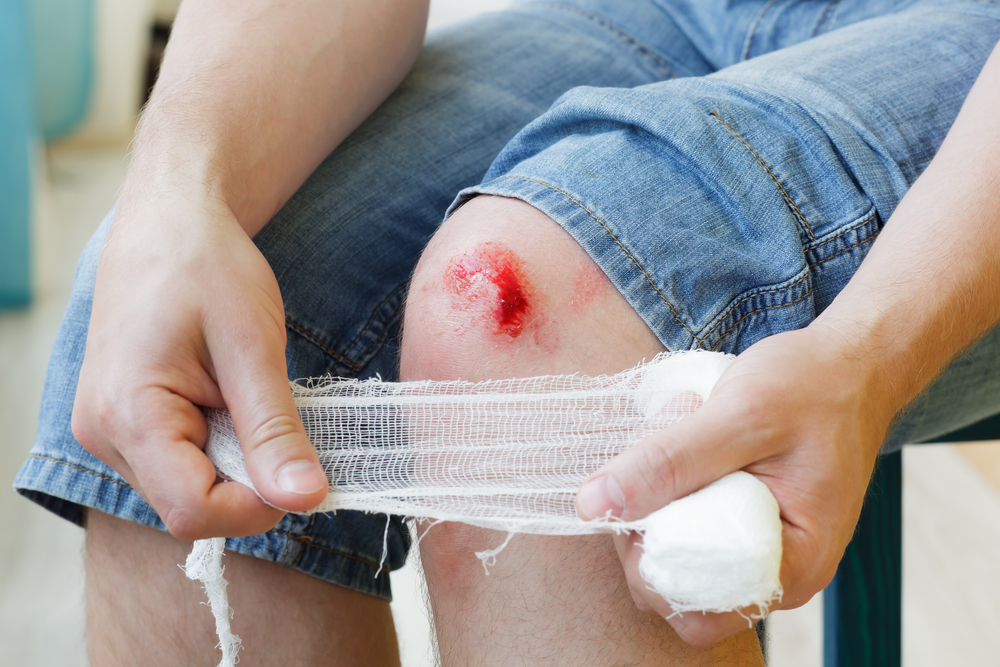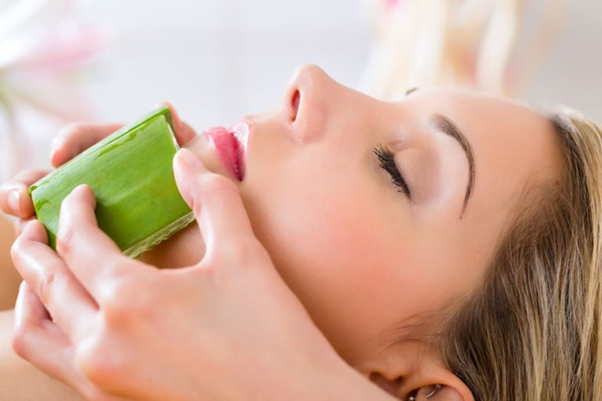The Science Behind Aloe Vera: Why This Plant Is More Than a Skin Soother

The Science Behind Aloe Vera: Why This Plant Is More Than a Skin Soother

If you think aloe vera is just a “natural remedy” for sunburns, think again. This humble succulent packs a surprising array of bioactive compounds that deliver measurable benefits for skin health, wound healing, inflammation control, and more. In this post, we’ll peel back the layers examining the science behind aloe vera, how it works in the skin, what evidence supports its use, safety considerations, and how you can include it meaningfully in your skincare.
1. What Is Aloe Vera? A Botanical & Biochemical Overview
Aloe vera (often Aloe barbadensis or Aloe vera L.) is a succulent plant that stores water in its thick leaves. The inner leaf tissue contains a clear gel, while the outer leaf skin (and latex just under the skin) contains other compounds.
That gel is not “just water” — though it’s ~95–99% water, the remaining fraction (the “active fraction”) contains a rich mix of polysaccharides, glycoproteins, enzymes, vitamins, minerals, phenolics, flavonoids, sterols, and anthraquinone compounds.
* Polysaccharides (notably glucomannan, acemannan) appear to play a key role in moisture retention, cell signaling, and stimulating skin repair.
* Phenolic compounds, flavonoids, sterols contribute antioxidant and anti-inflammatory activity.
* Anthraquinones / anthrones like aloin, emodin are also present (mainly in the latex or outer leaf layers) and have antimicrobial / laxative properties but these must be handled carefully.
Because of this complex mixture, aloe vera’s effects are multi‑modal: not just soothing, but regenerative, anti-inflammatory, and skin‑modulating.
2. How Aloe Vera Acts on the Skin: Mechanisms & Effects
To appreciate why aloe vera is more than a “soother,” let’s look at how it interacts with skin biology:
A. Wound Healing & Skin Repair
Many studies support that aloe vera accelerates wound healing. For example:
* In human epidermal keratinocyte models and skin equivalents, aloe gel and extracts enhanced wound closure, increased integrin expression (β1, α6, β4), and promoted cell migration and differentiation.
* A systematic review of clinical trials (23 trials) found aloe vera used in burns, ulcers, and wounds can help with wound healing and skin integrity.
* A 2024 review on aloe in cosmetology and dermatology reported cosmetic effects such as whitening, sun protection, antioxidant activity, moisturizing, antimicrobial, and wound healing in dermatoses.
Mechanistically, aloe’s polysaccharides stimulate fibroblast proliferation, collagen synthesis, and extracellular matrix repair.

B. Anti‑Inflammatory & Immune Modulation
Aloe vera can modulate inflammation via several pathways:
* Polysaccharides, phenolics, and flavonoids in aloe can downregulate pro-inflammatory cytokines -meaning it reduces inflammation.
* In skin, reducing inflammation is critical in preventing overreaction to UV exposure, irritants, or injury.
* The antioxidant activity of its bioactive compounds helps quench free radicals, further mitigating oxidative stress in the skin.
C. Antimicrobial / Antiseptic Effects
Aloe vera exhibits antibacterial, antiviral, and antifungal properties, which contribute to its usefulness in skin care and wound settings:
* It has been shown to inhibit bacteria like Staphylococcus aureus, Pseudomonas aeruginosa in laboratory settings.
* Because acne and other skin conditions often involve bacterial imbalance, this antimicrobial effect is relevant.
D. Moisturizing, Humectant & Barrier Support
Aloe’s gel, rich in polysaccharides, acts as a humectant — drawing and retaining moisture:
* The polysaccharides (like acemannan) form a film over the skin that helps reduce transepidermal water loss (TEWL).
* This film also helps to bind together flaking epidermal cells, improving skin integrity and texture.
* Hydrated skin is more resilient, better able to activate repair processes, and less prone to compensation (e.g. overproduction of oil).
E. Anti‑Aging, UV Protection & Pigment Regulation
Although aloe is not a substitute for sunscreen, it can play a supportive role:
* Antioxidants like vitamins C & E, phenolics help neutralize free radicals that cause aging and cell damage.
* Some components may help regulate melanin synthesis and reduce hyperpigmentation (e.g. aloesin).
* Recent studies suggest aloe-derived nanoparticles from rind and gel may help protect against UV-induced DNA damage and photoaging in vitro / animal models — indicating potential future roles in advanced skin protection.
All this underscores that aloe vera is not just a “cool gel,” but a biologically active botanical with multiple skin-relevant roles.
3. What the Clinical & Human Evidence Actually Says
While in vitro and animal studies are promising, what does human / clinical evidence support?
* Wound healing: As mentioned, clinical trials (burns, ulcers) show aloe vera (gel, creams) supports faster healing vs controls.
* Acne / skin conditions: Some small studies suggest aloe gel (topically) in combination with conventional acne therapies may improve outcomes. The U.S. National Center for Complementary and Integrative Health (NCCIH) notes that “two small studies suggest that topical application of aloe gel, in combination with other forms of treatment, may improve acne.”
* Safety & limitations: NCCIH cautions that evidence is limited. Also, whole-leaf extracts (non‑decolorized) have been classified as “possible carcinogen in humans” due to anthraquinone content (if not processed) — though this concern mainly pertains to ingestible preparations or unrefined extracts.
* Cosmetic / topical uses: Many skincare products include aloe vera as a functional or soothing ingredient, though the percentage, purity, and formulation quality vary (which impacts efficacy).
* Some dermatologists and commentary have noted that rigorous randomized controlled trials (RCTs) are sparse, particularly for long-term cosmetic benefits.
In short: the evidence supports aloe’s role in wound healing, moisturizing, and reduction of inflammation, with promising hints in acne, anti-aging, and pigment regulation. But it’s not a miracle cure, and formulation matters a lot.
4. How to Use Aloe Vera in Your Skincare Routine
Knowing the science is helpful — but how do you actually apply aloe vera (and maximize benefits) without pitfalls?
Choose the Right Type / Formulation
* Pure gel / inner leaf gel: The ideal is to use freshly extracted inner-leaf gel, or high-quality commercial aloe gel with minimal additives (no alcohol, minimal preservatives).
* Avoid latex / outer leaf / whole-leaf extracts: The latex (yellowish layer under the leaf skin) contains anthraquinones (like aloin) which are more irritant or laxative in effect. Many safer cosmetic products use decolorized / purified gel.
* Check ingredient labels: Look for high % aloe, low irritants (alcohol, fragrance, dyes).
* Nanoparticle / advanced formulations: In future, more advanced aloe-based nanocarrier or nanoparticle systems may enhance penetration or UV protection (emerging research).
Patch-Test & Sensitivity
Even botanicals can cause reactions. Always patch-test (e.g. inside forearm) for 24 hours before applying to large facial areas. Some people report itching, redness, burning.
Application Modes & Tips
* As a soothing gel / moisturizer: After cleansing (or after active treatments), apply a thin layer of aloe gel to calm the skin.
* As a mask: You can leave a thicker layer for 10–20 minutes and then rinse (or lightly massage in).
* In blends: Combine with non-comedogenic oils or hydrosols.
* Spot use: Over inflamed or irritated areas.
* Avoid mixing with very strong actives (like high-percentage acids or retinoids) unless your skin tolerates it — aloe can help buffer irritation but may also dilute actives.
Frequency & Layering
Because aloe is gentle, it can often be used daily (morning and/or evening). But always observe your skin’s response and adjust. Use it after cleansing and before heavier creams or emollients.
5. Use Cases & Benefits for Acne‑Prone / Oily / Sensitive Skin
What aspects of aloe’s biology make it especially useful for challenging skin types?
1. Anti-inflammatory and antioxidant properties help reduce redness, swelling, and oxidative stress (especially after actives)
2. Moisture retention / barrier support helps prevent dehydration and “rebounds” (when skin overproduces oil)
3. Mild antimicrobial effects may help in controlling acne-related bacteria
4. Wound / scar repair supports healing of post-acne lesions
5. Good tolerance in many formulations — less likely to irritate than strong actives in many cases
However, note that aloe alone is unlikely to clear moderate to severe acne — it works best as a supportive / complementary agent.
6. Safety, Risks & Precautions
* Some people have allergic reactions (contact dermatitis). Test first.
* Avoid using raw latex / unrefined whole leaf (anthraquinones can irritate or be systemically active).
* Internal / oral ingestion of aloe (especially latex or whole-leaf) carries more risks (e.g. gastrointestinal effects) and is beyond the scope of topical skin use. NCCIH warns of safety concerns with ingestible forms.
* Quality matters: many commercial aloe gels are diluted, combined with irritants or low in true aloe content — which reduces effectiveness.
* As with any skincare ingredient, discontinuation is wise if you see persistent irritation, worsening condition, or allergic symptoms.

Aloe vera is far more than a “cooling gel” it is a biologically active botanical with documented effects in wound healing, skin repair, inflammation control, moisturizing, and even pigment modulation. The polysaccharides, antioxidants, and antimicrobial factors within its gel allow it to act on multiple fronts, making it a valuable adjunct in a skin-care routine rather than just a soothing afterthought.
That said, aloe vera is not a silver bullet. Its efficacy depends heavily on formulation purity, concentration, and how it's applied. Use it wisely: patch test, choose high-quality gels or extracts, and include it as part of a broader skin-care strategy (cleansing, actives, hydration, barrier support).

:max_bytes(150000):strip_icc()/GettyImages-1278775866-0a508f3311d347d08e73ac68fb016aeb.jpg)



